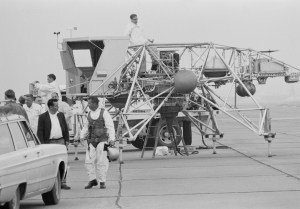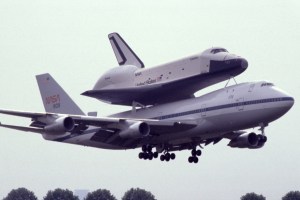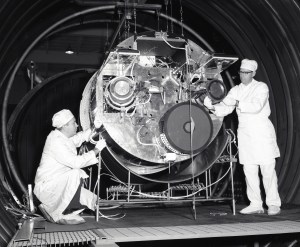Today, multi-stage rockets regularly launch satellites into orbit, dispatch spacecraft to other worlds, and deliver crews to space stations. The first two-stage liquid-fueled rocket launch predated the Space Age by nearly a decade, taking place on May 13, 1948, at the White Sands Proving Ground (WSPG) in New Mexico.
Today, multi-stage rockets regularly launch satellites into orbit, dispatch spacecraft to other worlds, and deliver crews to space stations. The first two-stage liquid-fueled rocket launch predated the Space Age by nearly a decade, taking place on May 13, 1948, at the White Sands Proving Ground (WSPG) in New Mexico. Combining German and American technology, the Bumper program put together a captured V-2 rocket as a booster with a WAC Corporal sounding rocket as an upper stage. The two-stage Bumper rockets reached altitudes never attained before, returning scientific information from that extreme environment. Although the WSPG, renamed the White Sands Missile Range on April 29, 1958, has remained active, the U.S. government transferred the Bumper program to a new site under development in Cape Canaveral, Florida, for its final two launches in 1950.
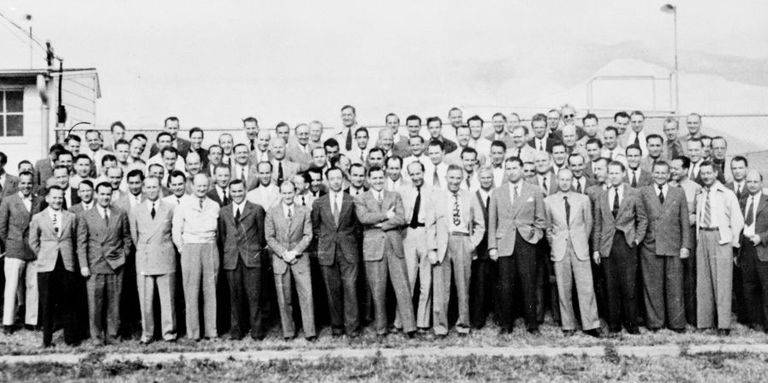
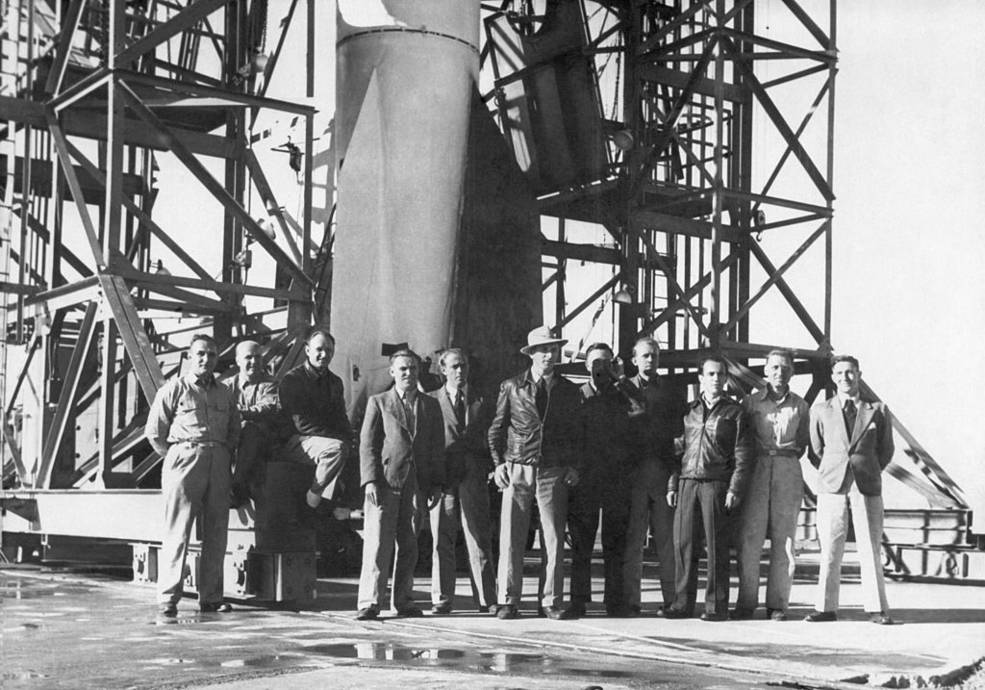
Left: German scientists and engineers pose at Fort Bliss, Texas, in 1946. Right: Posing at the base of a V-2 rocket at the White Sands Proving Ground, now the White Sands Missile Range, in New Mexico, in 1946.
The story begins near the end of World War II when on April 11, 1945, American forces captured the German V-2 rocket production facility in the Harz Mountains, along with scientists and engineers and enough key components to build 100 V-2 ballistic missiles. On July 9, 1945, the U.S. Army activated the WSPG in New Mexico’s Tularosa Basin between Las Cruces and Alamogordo, a 3,200-square-mile site for testing missiles. Construction of facilities including the first launch pads began the next day. As part of Operation Paperclip, in September 1945 the U.S. government began relocating the German specialists and their rockets to Fort Bliss, Texas, near the WSPG, where under the guidance of the U.S. Army they continued work on rockets and missiles.
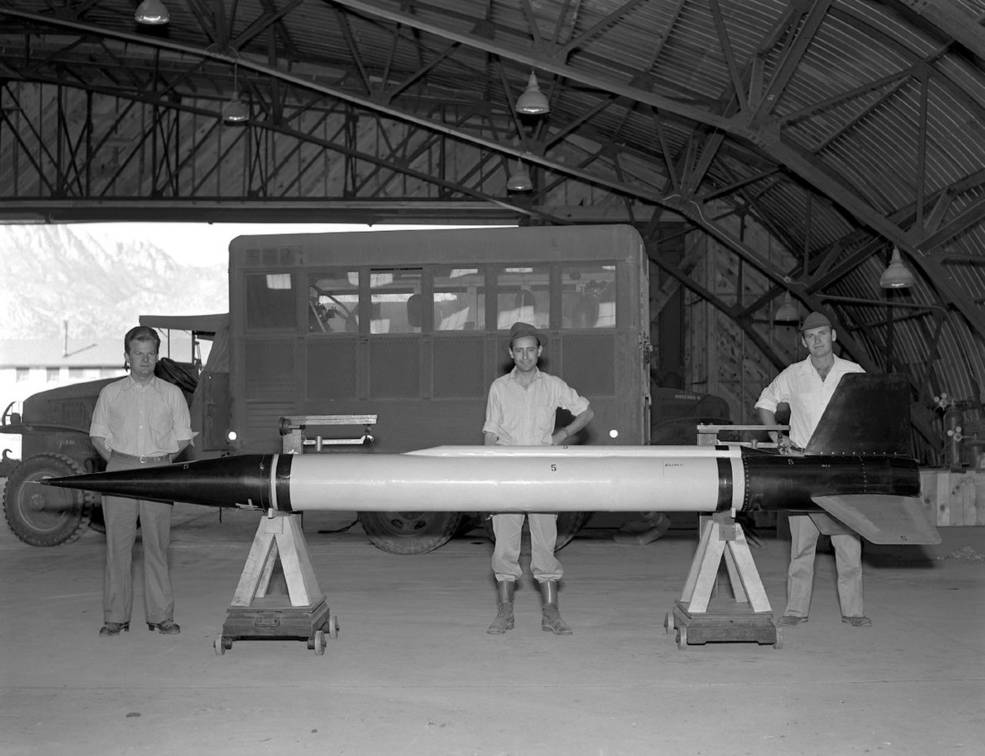
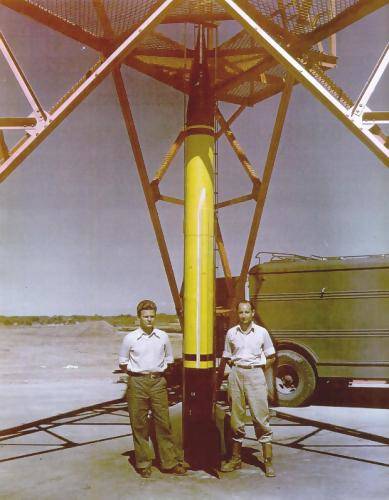
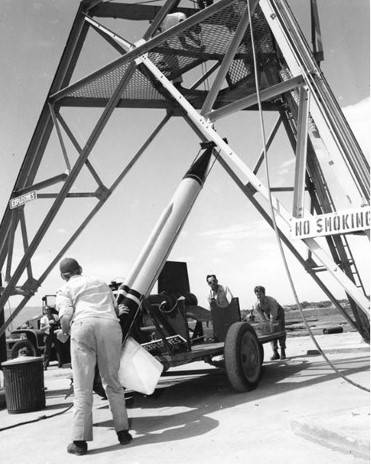
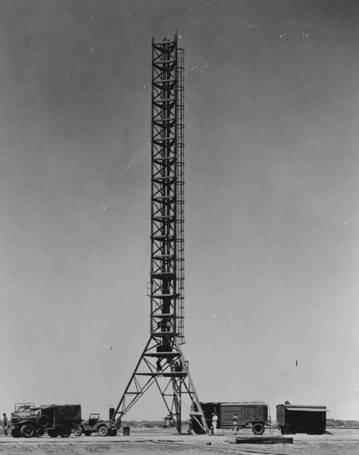
Left: Engineers weighing a WAC Corporal before flight. Middle left: Engineers stand with a WAC Corporal under the launch tower. Middle right: Technicians prepare to hoist a WAC Corporal into the 100-foot launch tower. Right: A WAC Corporal inside the launch tower.
A 1943 paper established the theoretical basis for the development of a liquid-fueled sounding rocket that led to the Corporal rocket. In 1944, the U.S. Army Ordnance Department began funding the California Institute of Technology in Pasadena to develop the sounding rocket. They used their first product, a solid-fueled rocket called Private, to test launch operations. The WAC Corporal—WAC possibly stood for Without Attitude Control, since the rocket had no guidance system—used another solid-fueled rocket called Tiny Tim to boost it through its 100-foot launch tower at WSPG. The shock from the solid rocket began the ignition process of the Corporal’s engine. After several booster tests including one with a dummy WAC Corporal in September 1946, the first fully fueled WAC Corporal launched on Oct. 11, 1946, marking the start of operations at WSPG. The rocket’s engine burned for 47 seconds, taking it to an altitude of 43.5 miles. The nose cone failed to separate, preventing the parachute from deploying. The rocket crashed less than a mile from the launch tower after a flight of 7.5 minutes. Crews launched 25 more WAC Corporals through June 1947, achieving many successes including one that reached an altitude of 50 miles, the first American rocket to reach space. The final eight WAC Corporals flew as upper stages atop V-2 rockets as part of the Bumper program.
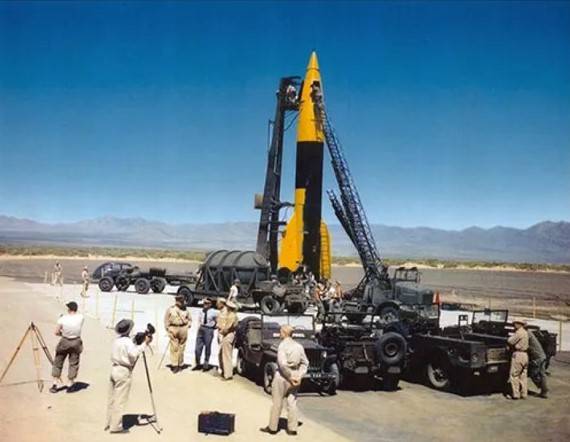
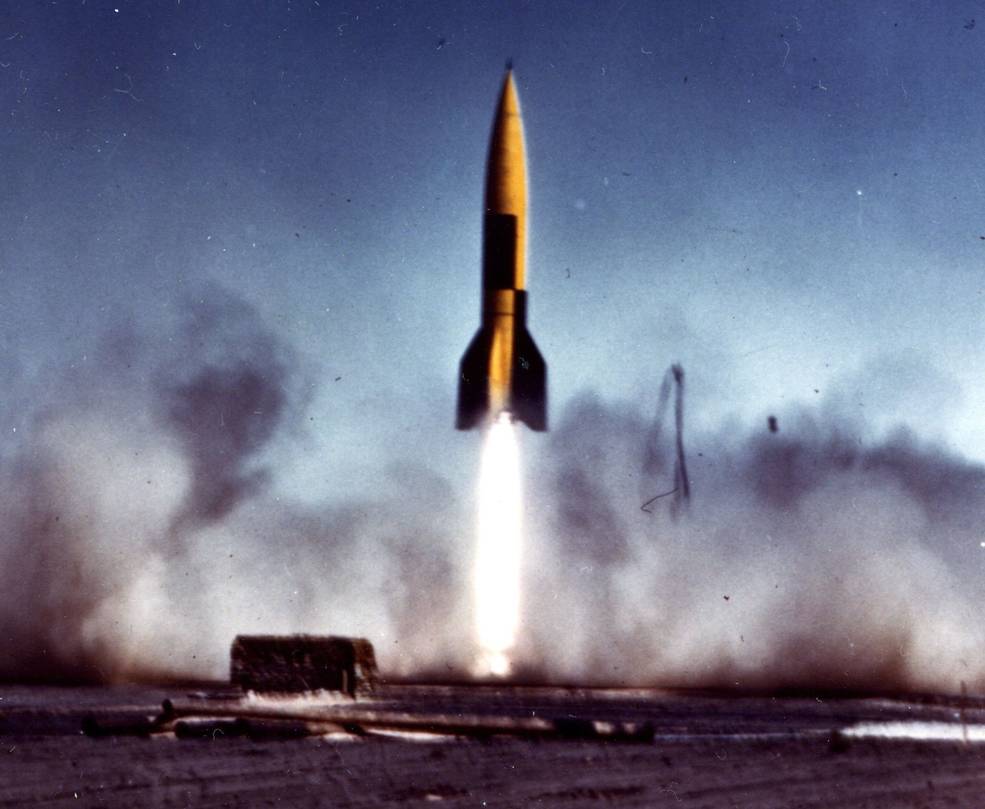
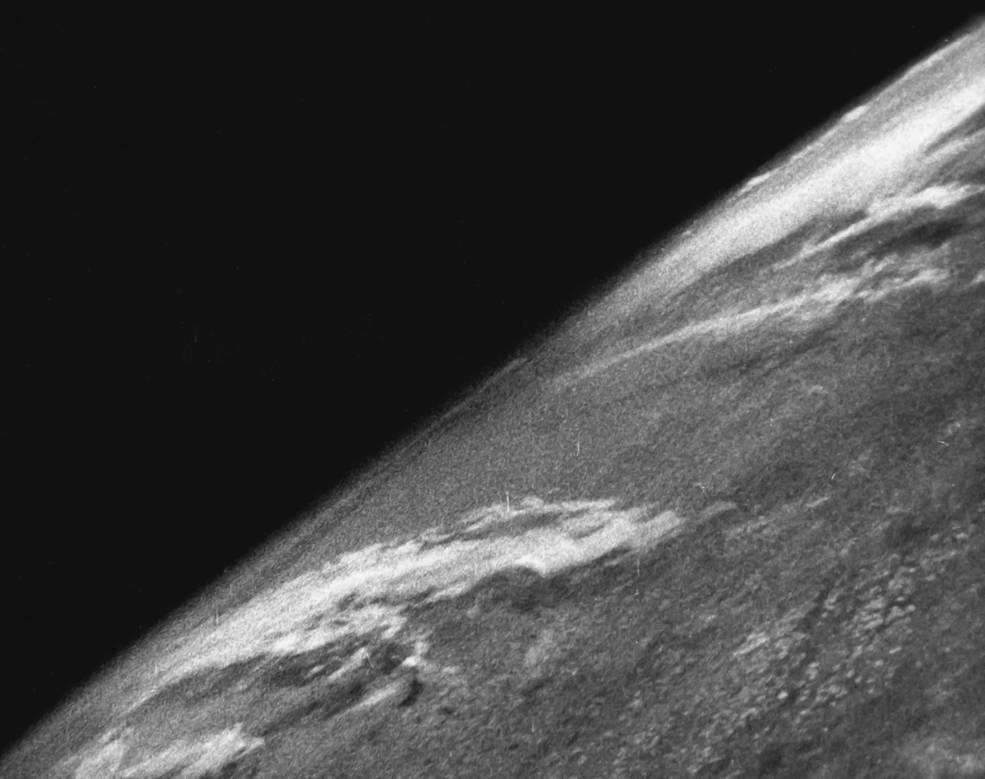
Left: American and British military dignitaries pose for photographs in front of a V-2 rocket on May 10, 1946. Middle: Liftoff of a V-2 rocket on May 10, 1946. Right: The first photograph of the Earth from space taken on Oct. 24, 1946, by a camera aboard a V-2 rocket.
The first static test firing of a V-2 rocket at White Sands took place on March 15, 1946, with the first launch following on April 16. Teams launched a total of 67 V-2 rockets until the last flight on Sept. 19, 1952, the program meeting with mixed success. Of note, the Oct. 24, 1946, flight carried a 35-millimeter camera that recorded the first images of Earth from space, from an altitude of 65 miles, clearly showing the curvature of the planet. Other V-2 rockets carried instruments that took the first solar ultraviolet spectrograms above the Earth’s ozone layer, brought back air samples, and made cosmic ray measurements. On the other hand, a V-2 launched on May 29. 1947, veered off course and crashed near Juarez, Mexico, fortunately causing no damage or injuries.
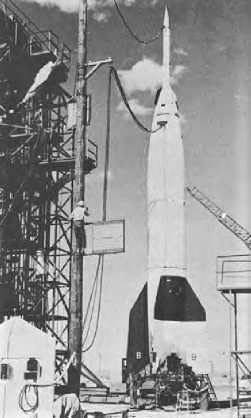
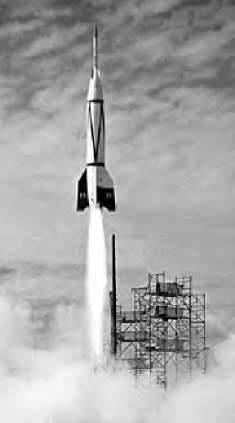
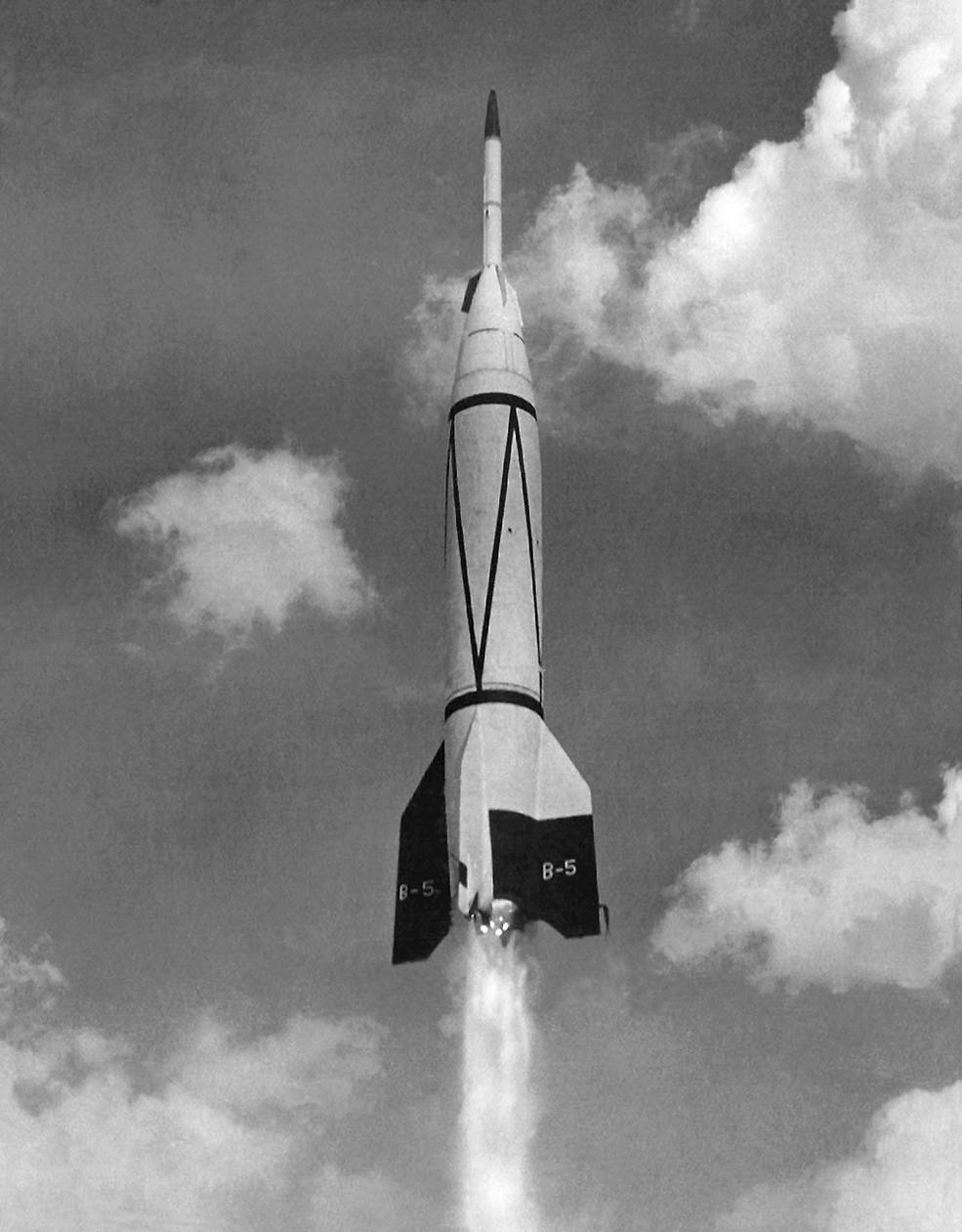
Left: Workers prepare the Bumper 5 two-stage rocket for launch at the White Sands Proving Ground. Middle: Bumper 5 shortly after liftoff. Right: Bumper 5 later in its ascent.
In July 1946, the U.S. Army conceived of the idea of a two-stage liquid-fueled rocket by placing a WAC Corporal atop a V-2, and on June 20, 1947, the Army formally approved a program called Bumper to develop and test such a rocket, able to reach altitudes neither rocket alone could attain. On May 13, 1948, Bumper 1, the first large two-stage rocket took off from White Sands. It carried an unfueled Corporal upper stage with a solid-fueled rocket to test the separation mechanism. The flight achieved all its objectives. The second flight, also with an unfueled Corporal, on Aug. 19, ended prematurely due to a fuel supply problem in the V-2 booster. The next two flights on Sept. 30 and Nov. 1, with partially fueled Corporal upper stages, ended in failure due to the upper stage motor exploding just prior to separation and the V-2’s tail section exploding, respectively. Engineers met with success on the fifth Bumper flight on Feb. 24, 1949, with the fully-fueled Corporal reaching a speed of 5,150 mph and an altitude of 244 miles, the first object to enter extra-terrestrial space, more than double the previous V-2 altitude record of 110 miles. Instruments in the nose cone measured temperatures at high altitudes, with the radio equipment sending telemetry from the highest altitude up to that time. The sixth and final Bumper flight at White Sands took off on April 21, 1949. Buoyed by the previous flight’s success, engineers hoped to have another success with Bumper 6, with the nose cone instrumented to record data on cosmic radiation from altitudes previously unattainably. Unfortunately, the V-2’s engine shut down prematurely and the WAC Corporal didn’t separate or fire its engine.
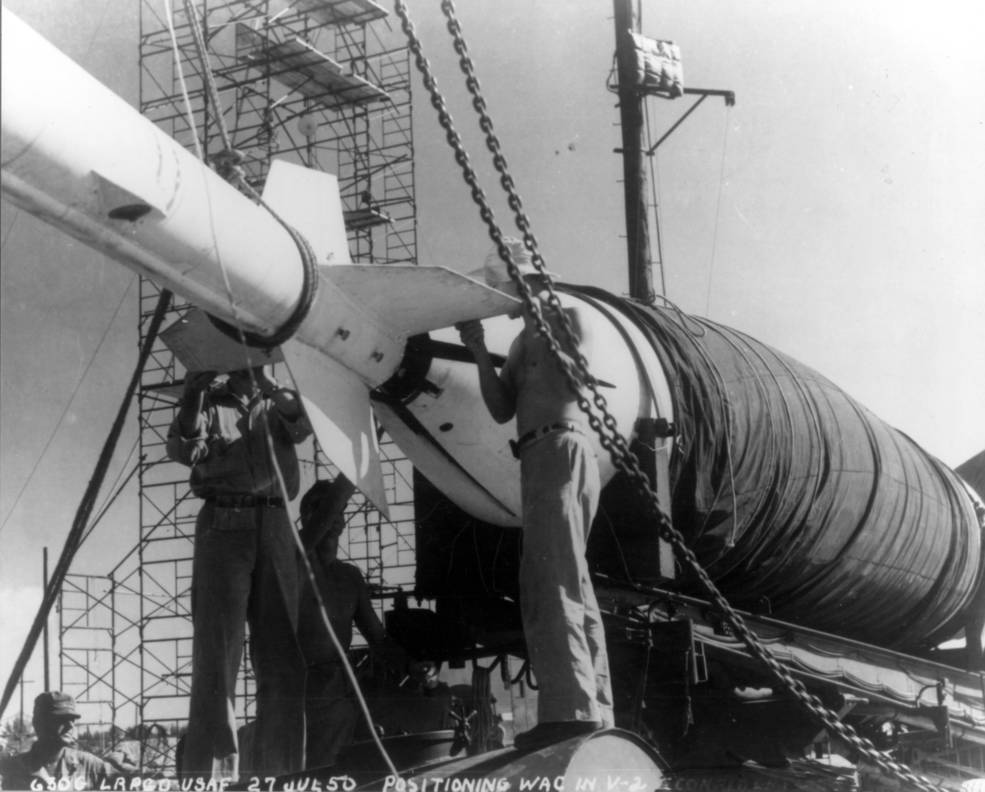
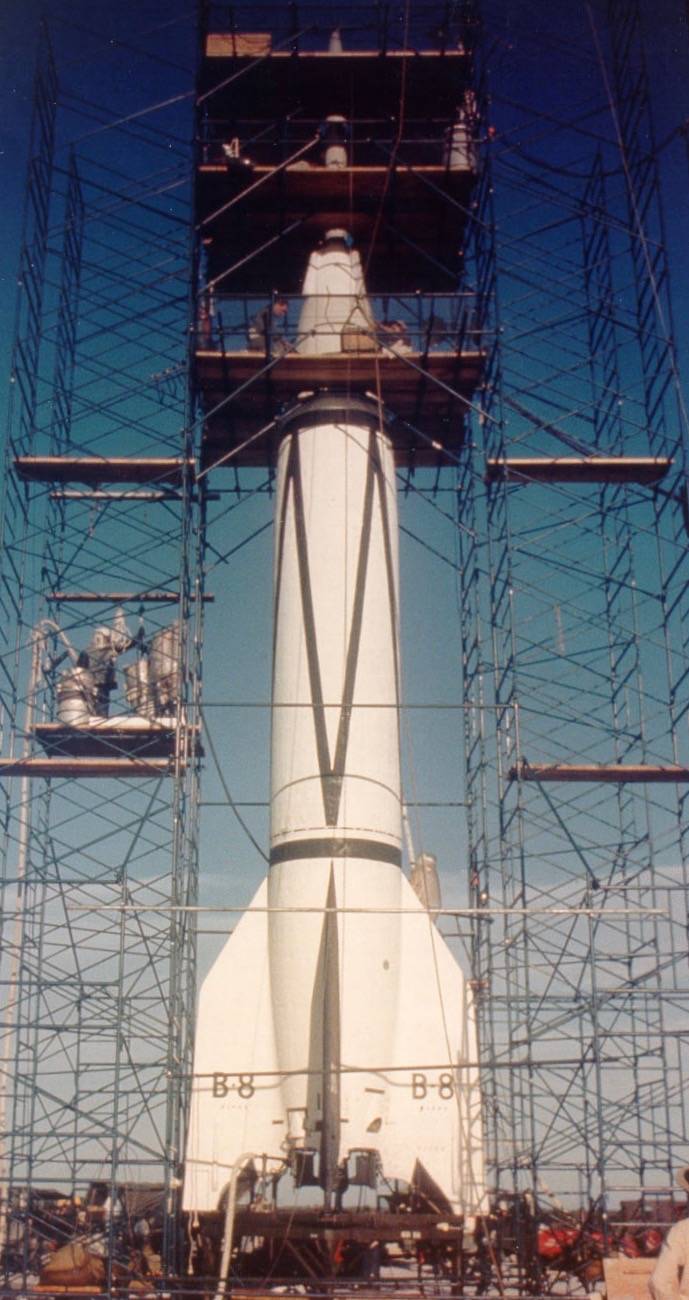
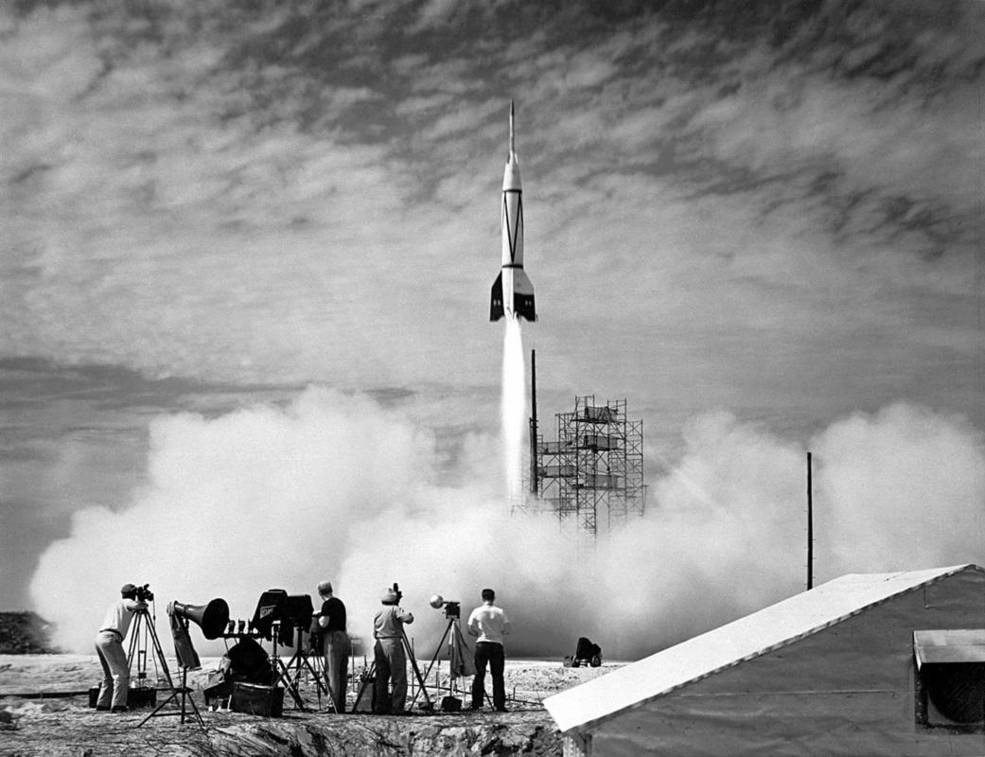
Left: Workers attach the WAC Corporal second stage to the V-2 booster for the Bumper 7 flight at Cape Canaveral, Florida. Middle: Bumper 8 in its gantry at Cape Canaveral prior to launch. Right: The first rocket launch from Cape Canaveral, the Bumper 8 flight.
While the White Sands facility proved adequate for vertical flights, tests requiring more horizontal components needed an over-water range and such a range did not exist in the 1940s. The Army, Air Force, and Navy jointly established the Long Range Proving Ground (LRPG) on a bit of remote central Atlantic Florida coastline called Cape Canaveral. The site was chosen for its low population density, and proximity to an abandoned naval base (Banana River Naval Air Station, now Patrick Space Force Base). It enabled rocket launches initially with a range of 500 miles and eventually up to 5,000 miles. The Army Corps of Engineers constructed Launch Complex 3 for the Bumper rocket tests, including the pad itself and a blockhouse. Workers trucked the last two Bumper rockets from White Sands to Cape Canaveral. Engineers prepared Bumper 7 for launch on July 19, 1950, but delays eventually scrubbed the launch. Workers replaced it with Bumper 8 that took off on July 24, 1950, the first rocket ever launched from Cape Canaveral. The V-2 lifted off normally, but the missile heeled over to 10 degrees instead of the planned 22 degrees, causing undue strain on the WAC Corporal second stage that separated but failed to ignite. Engineers tried again with Bumper 7 on July 29, and achieved some success. The V-2 again flew a lower trajectory profile than planned, but the Corporal separated at an altitude of 8.5 miles and fired for 40 seconds. It reached a speed of more than 3,200 miles per hour, and although roughly half the targeted velocity still the highest speed achieved in the atmosphere to that time, and traveled 150 miles downrange. With the Bumper 7 launch the program ended but Cape Canaveral’s Complex 3 remained in service to launch other rockets.



























